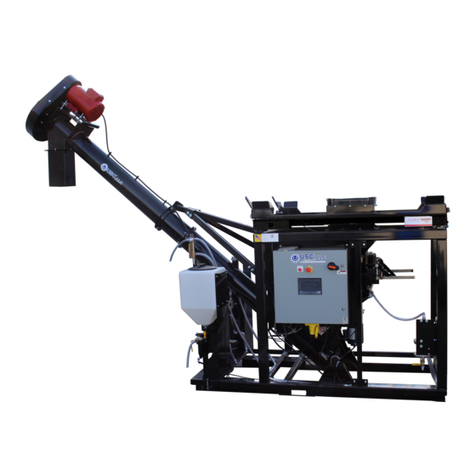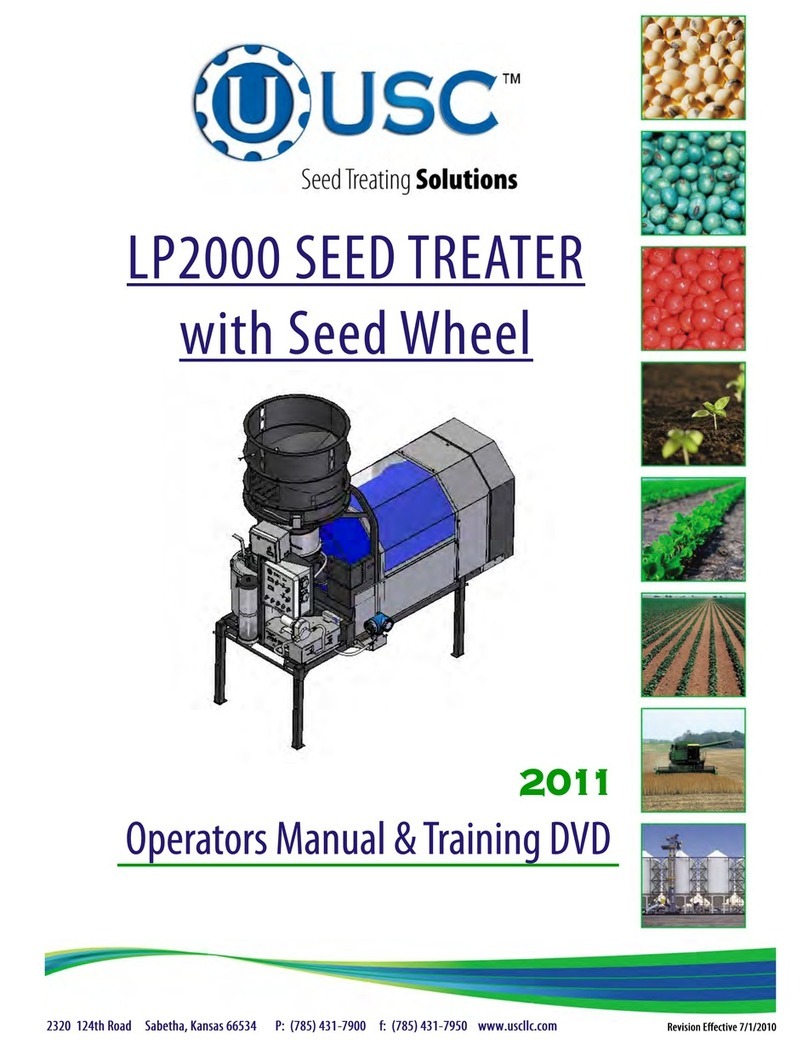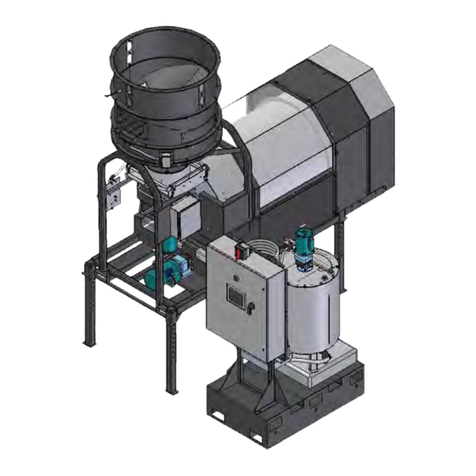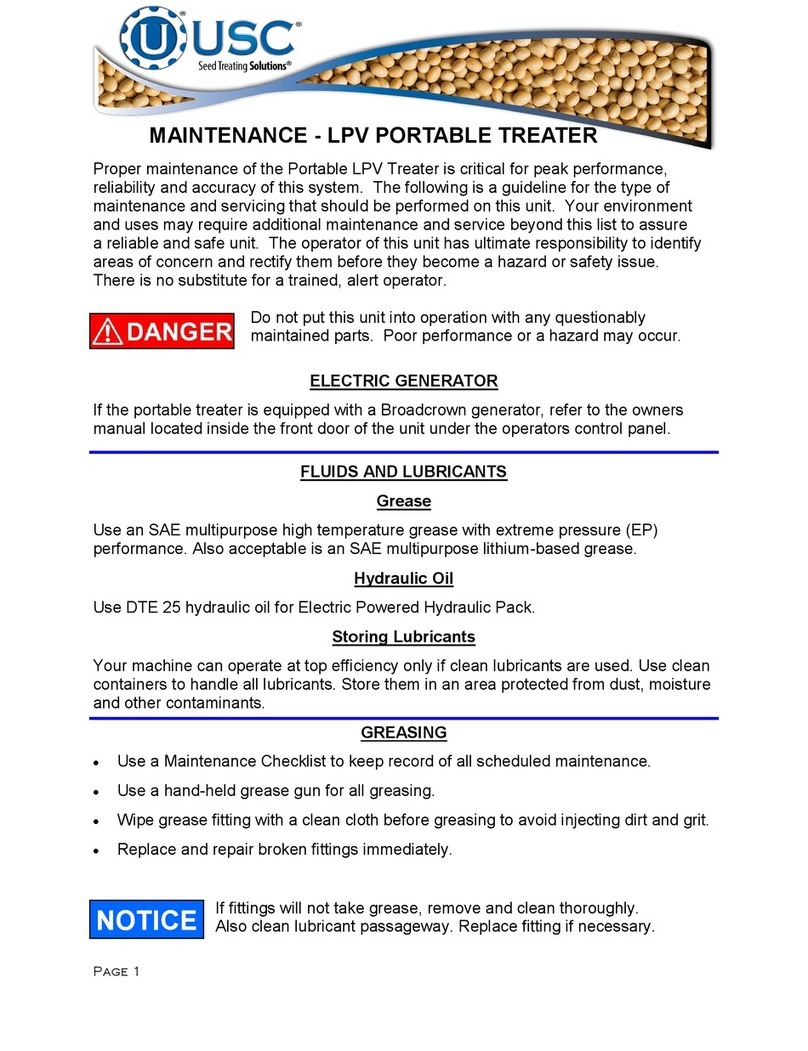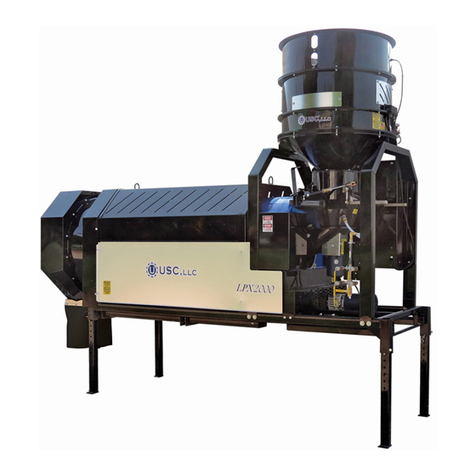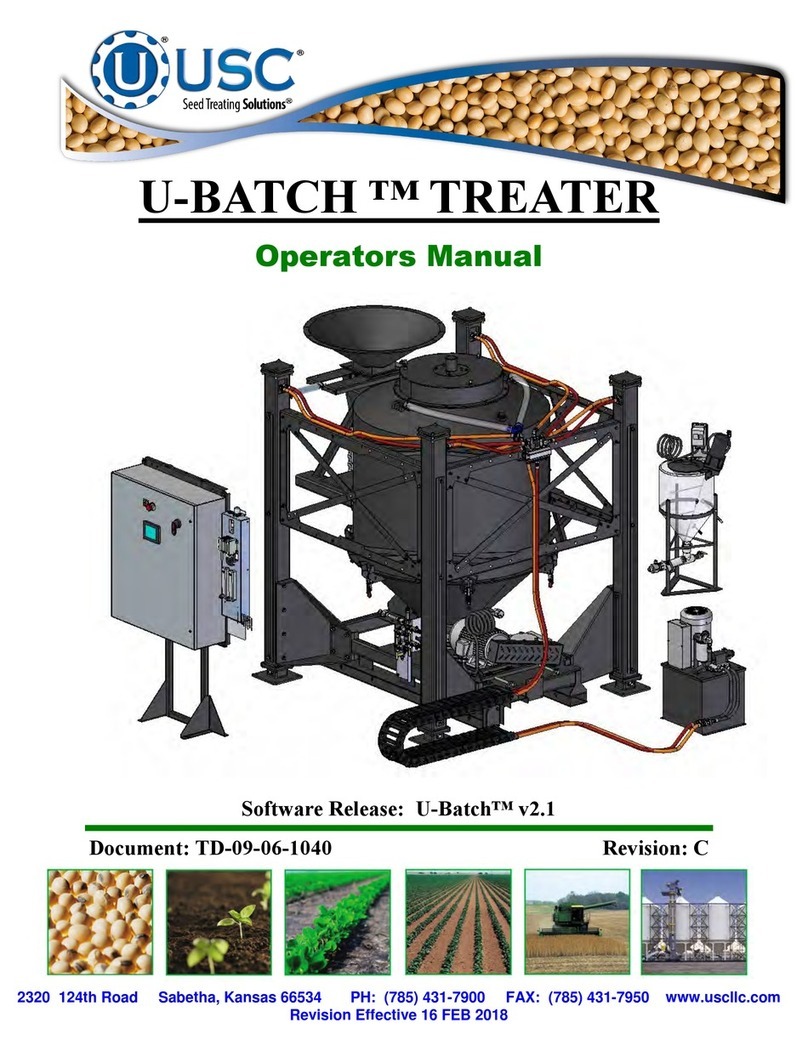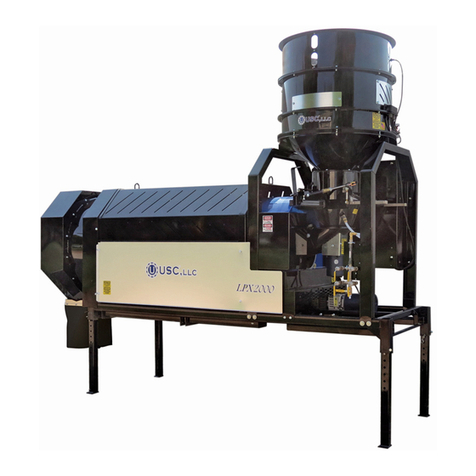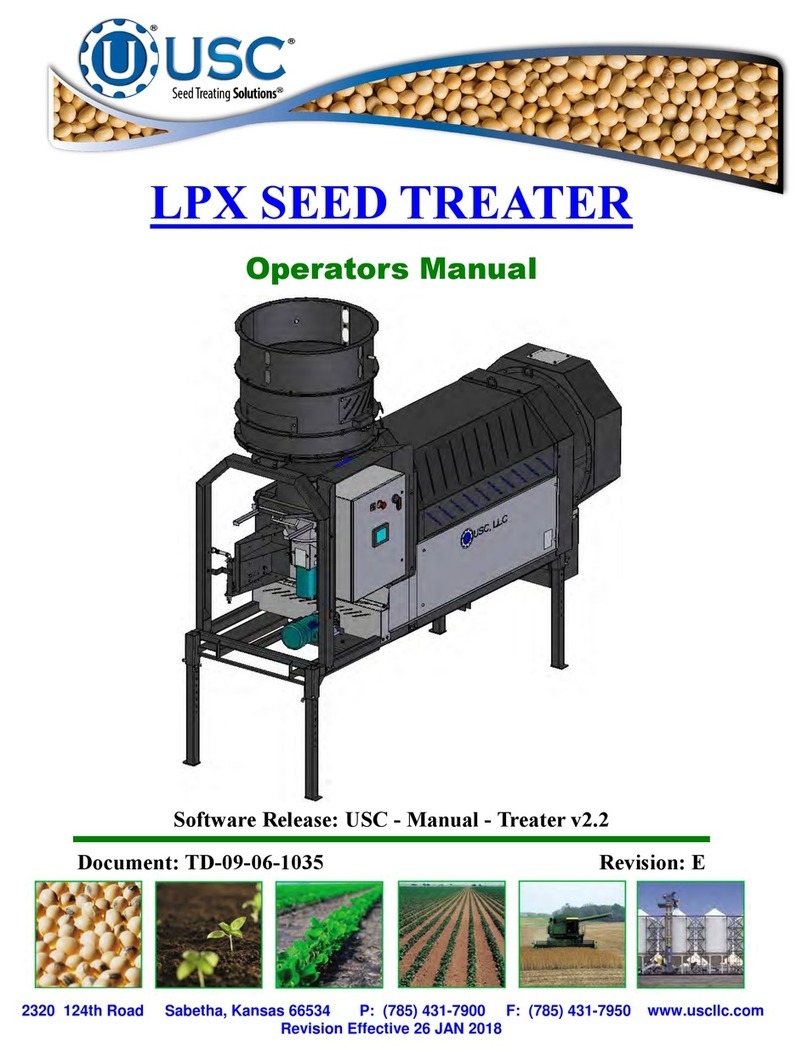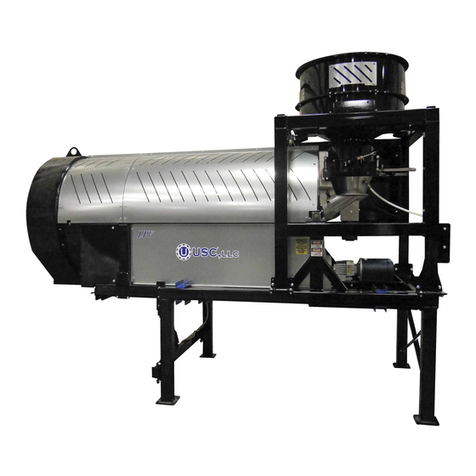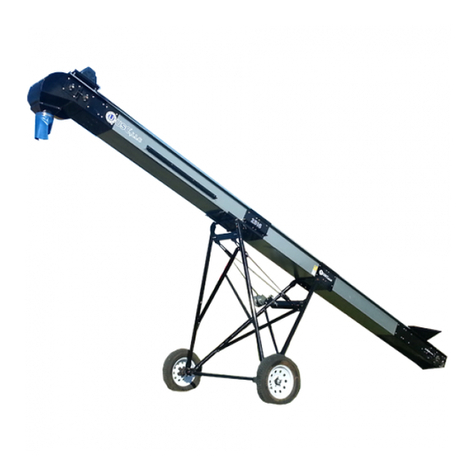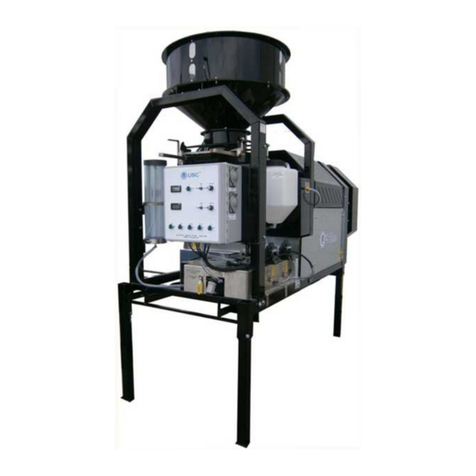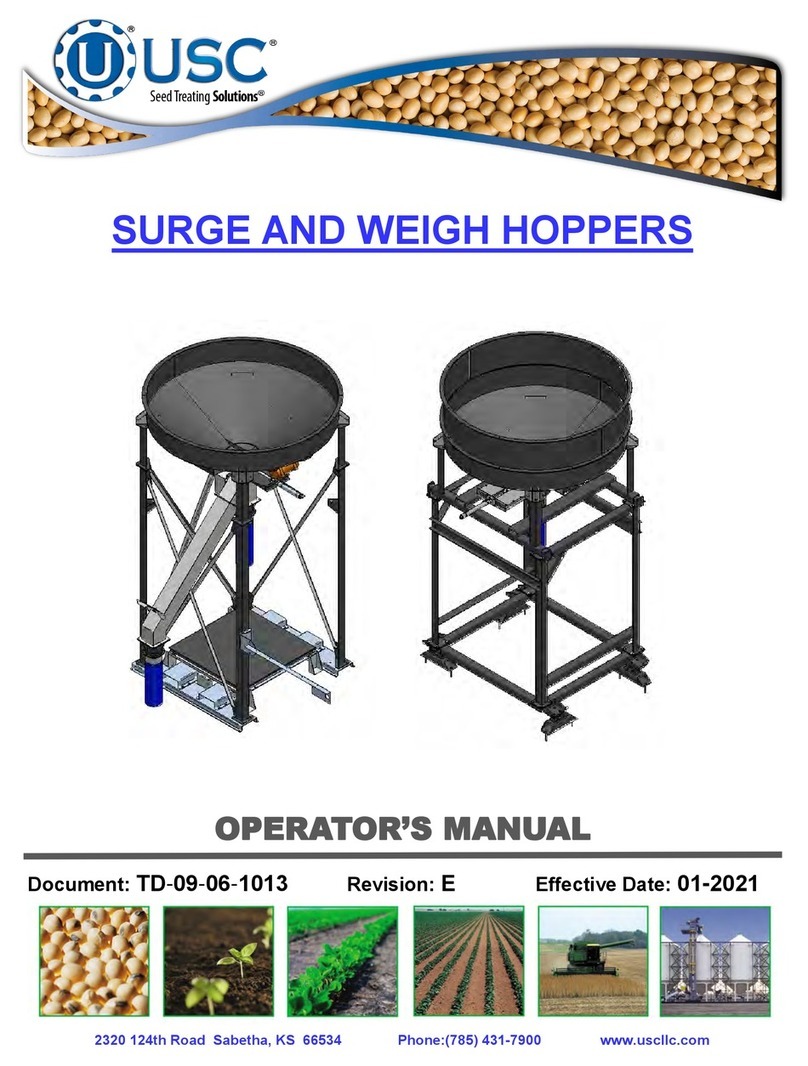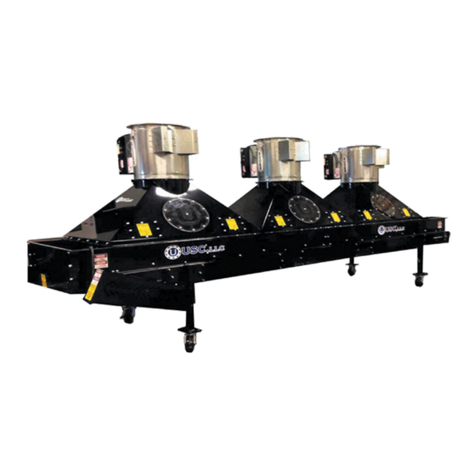
Page 5
TD-09-06-1064 LPV 100 SEED TREATER
Notice is used to notify people of important installation, opera-
tion or maintenance information which is not hazard related.
NOTICE
Mandatory Lockout Power Symbol. Disconnect, lockout
and tagout electrical and other energy sources before inspect-
ing, cleaning or performing maintenance on this equipment.
International Safety Alert Symbol. The exclamation point (!)
surrounded by a yellow triangle indicates that an injury hazard
exists. However, it does not indicate the seriousness of po-
tential injury. The exclamation point (!) is also used with the
DANGER, WARNING and CAUTION symbols so the potential
injury is indicated.
Electrocution Hazard Symbol. This symbol indicates that
an electrocution hazard exists. Serious injury or death could
result from contacting high voltage.
LOCKOUT / TAGOUT PROCEDURES
Lockout/Tagout is the placement of a lock/tag on an energy isolating device in
accordance with an established procedure. When taking equipment out of service to
perform maintenance or repair work, always follow the lockout / tagout procedures as
outlined in ANSI Z344.1 and/or OSHA Standard 1910.147. This standard “requires
employers to establish a program and utilize procedures for affixing appropriate
lockout devices or tagout devices to energy isolating devices and to otherwise disable
machines or equipment to prevent unexpected energizing, start-up, or release of
stored energy in order to prevent injury to employees.”
EMERGENCY STOP
There is an Emergency Stop push button on all LPV Seed Treaters which
is located on the Treater Control Panel. The LPV Automated Treater has
an additional Emergency Stop pushbutton on the Main Control Panel.
Actuators of emergency stop shall be colored RED. The background
immediately around the device actuator shall be colored YELLOW.
The actuator pushbutton operated device shall be of the palm or
mushroom head type.
International Electrocution Hazard. This symbol indicates
that an electrocution hazard exists. Serious injury or death
could result from contacting high voltage.

